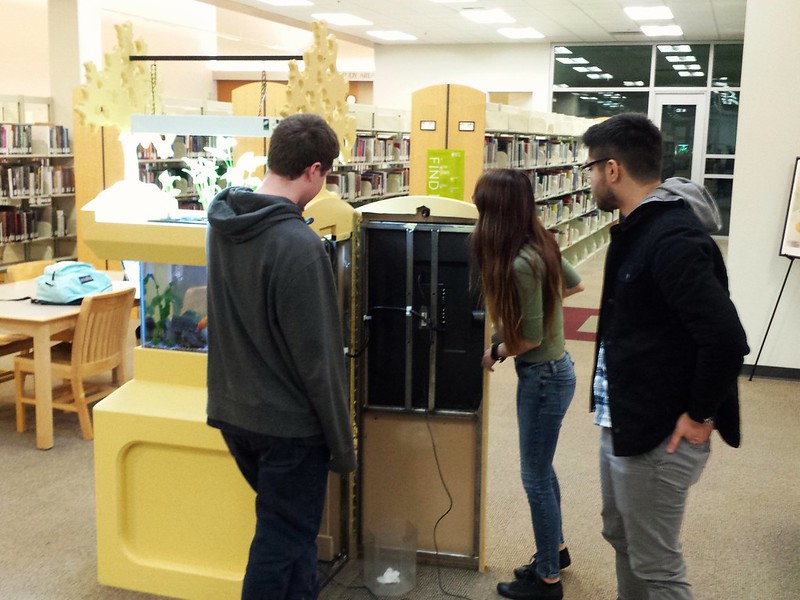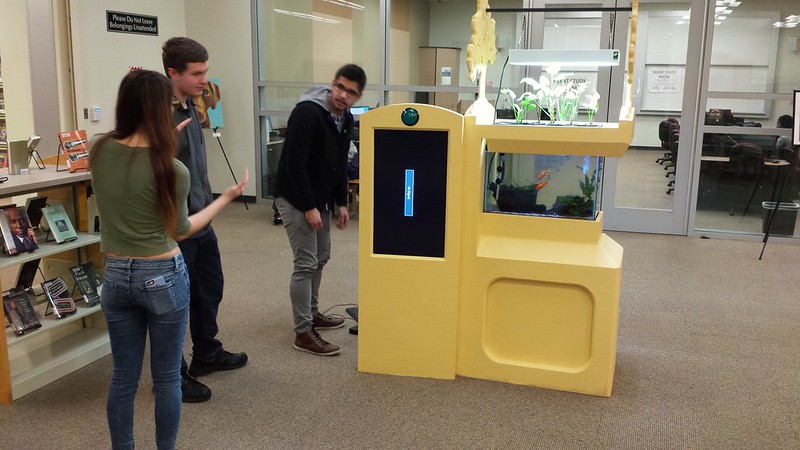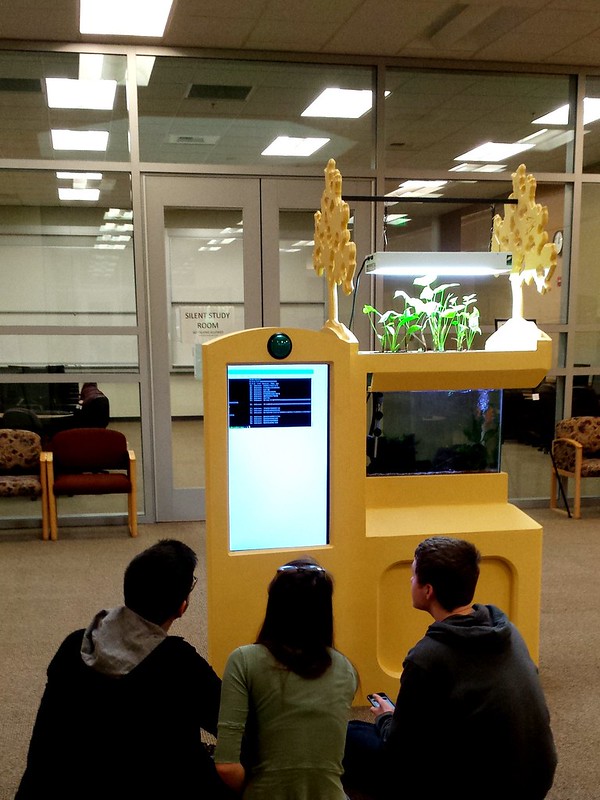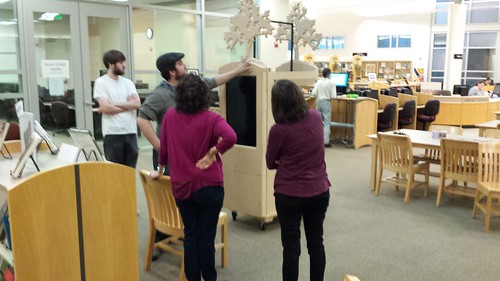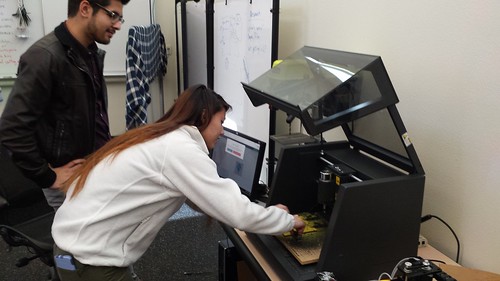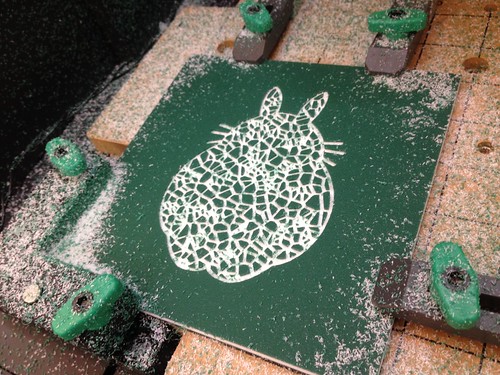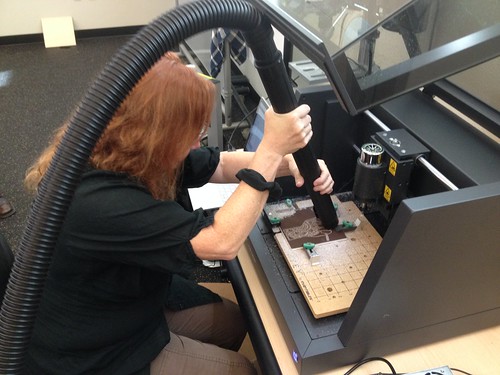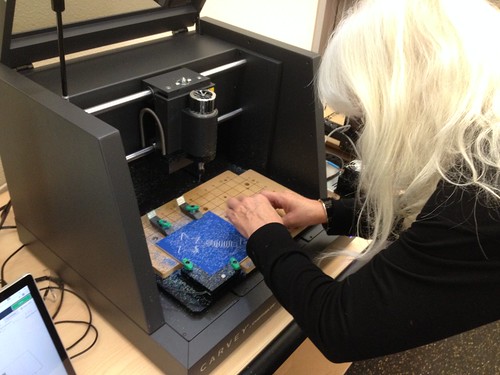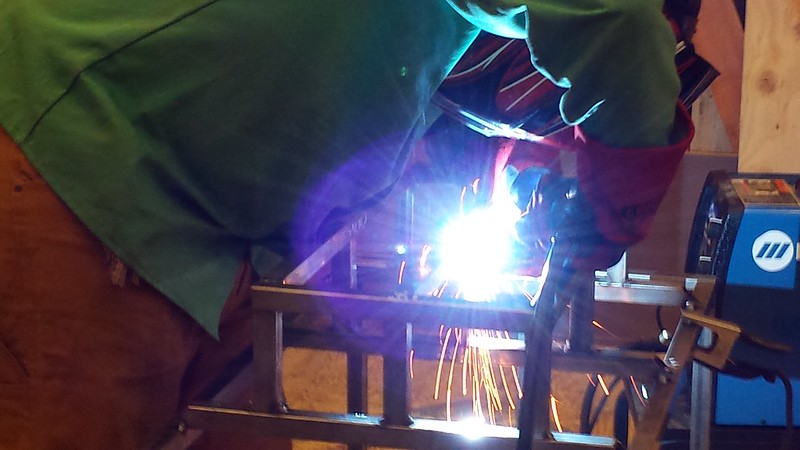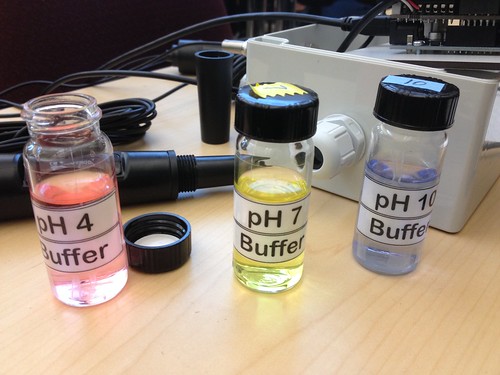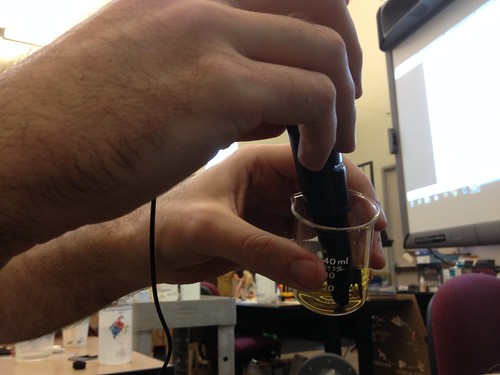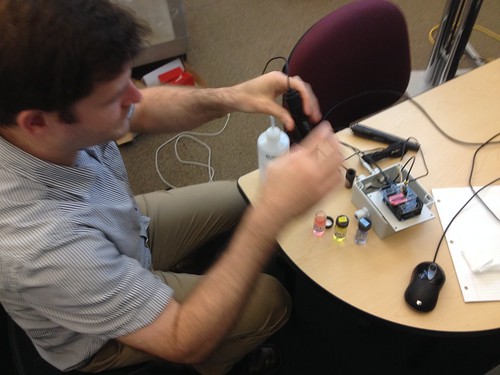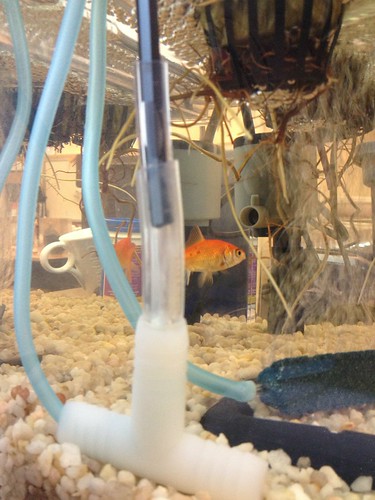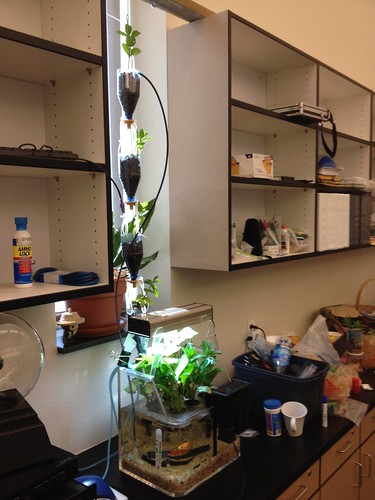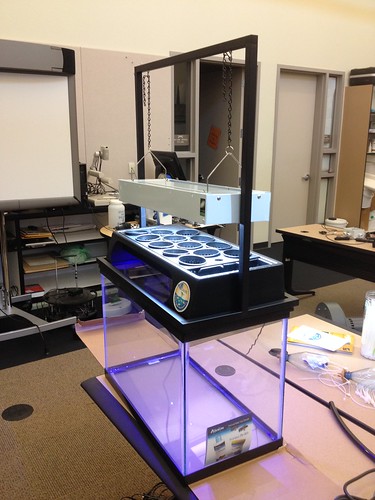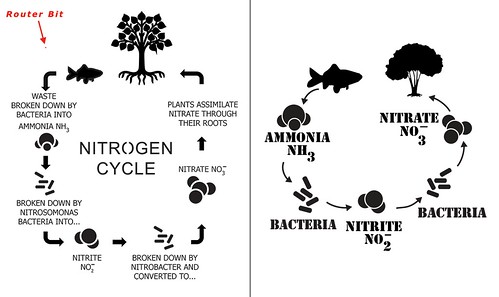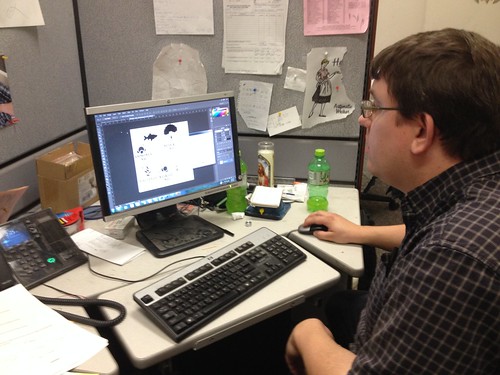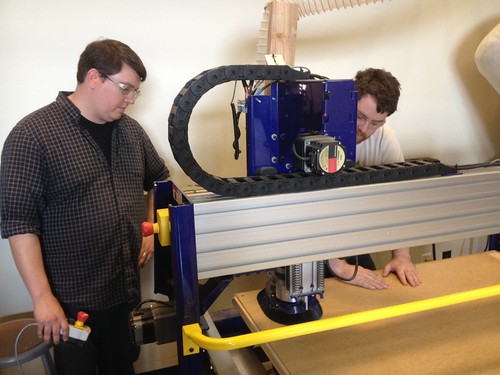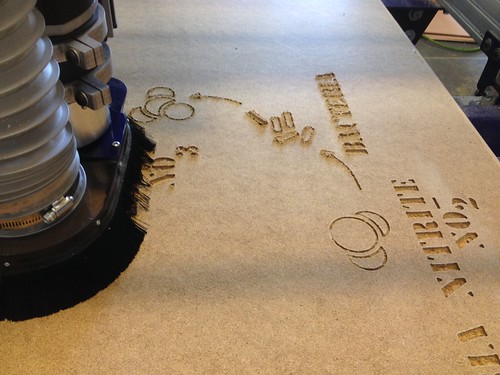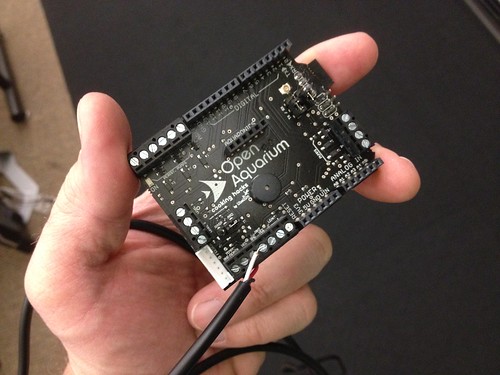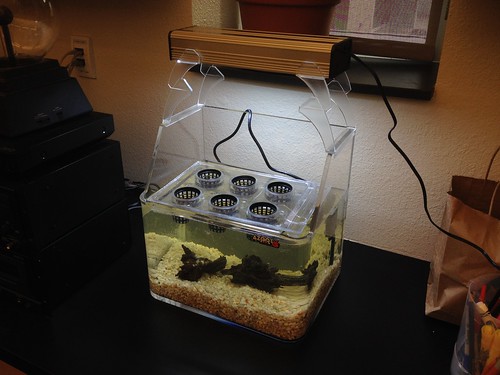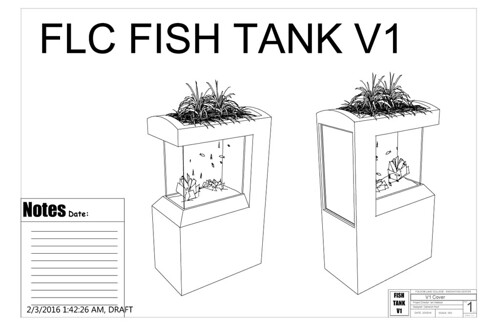We reached an important milestone in the project this afternoon. The power trio of Nathaniel, Rebekah, and Nathan – the core of FLC’s Data Science Club – got the Raspberry Pi installed and working to drive the integrated monitor, displaying a rolling presentation about the science – chiefly the nitrogen cycle – that makes the aquaponics system work.
As with most prototypes, the presentation needs a few tweaks, but it’s great to see all of the system components coming together.
Nathan is working on the Arduino sensor array, and we’re still waiting to swap the science fish with the aquaponics fish, the latter in the quarantine holding tank in the Innovation Center. The plan is to swap the green arcade button with a blue one, to match the colors in the presentation, and the button subsystem needs some attention, but overall the project is finally starting to feel like it might one day be finished!

